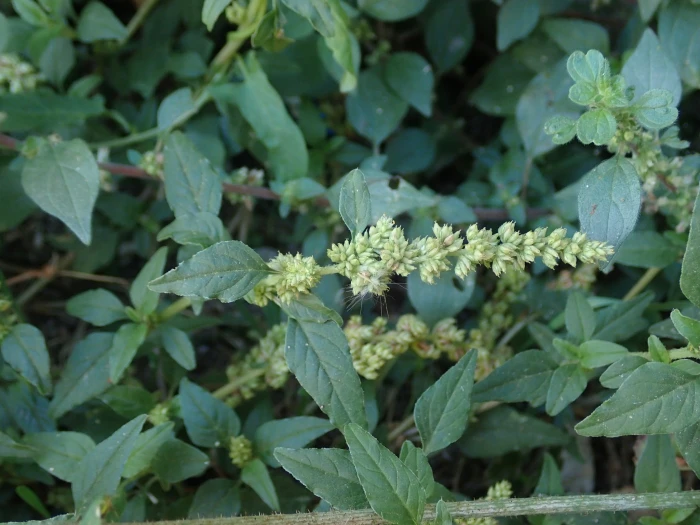Low Amaranth
(Amaranthus deflexus)
Low Amaranth (Amaranthus deflexus)
/
/

Daniel Cahen
CC BY 4.0
Image By:
Daniel Cahen
Recorded By:
Copyright:
CC BY 4.0
Copyright Notice:
Photo by: Daniel Cahen | License Type: CC BY 4.0 | License URL: http://creativecommons.org/licenses/by/4.0/ | Rights Holder: Daniel Cahen | Publisher: iNaturalist | Date Created: 2023-09-21T12:57:22-07:00 |

























Estimated Native Range
Climate Requirements for Windsor, Canada
| This Plant | Your Site | Plant Suitability for Your Location | ||
|---|---|---|---|---|
| • Precipitation | 0" - 217" | 35" | Your precipitation may be too high for this plant. | Too high |
| • High Temp. | 57°F - 114°F | 83°F | Your summer temperatures are normal for this plant. | Excellent |
| • Low Temp. | 2°F - 73°F | 18°F | Your winter temperatures are normal for this plant | Excellent |
This plant may not grow well at your location - your precipitation is too high.
Summary
Amaranthus deflexus, commonly known as Low Amaranth or Argentina Amaranth, is an annual herb that is native to South America, specifically in open, disturbed areas such as roadsides and waste places. It typically grows to a modest height of up to 1 meter. This species is characterized by its erect, green to reddish stems and its broad, alternate leaves which can have a reddish tinge. The flowers are small, greenish, and arranged in dense clusters along the stem, blooming in summer and early fall. While not particularly showy, the plant is known for its hardiness and ability to thrive in poor soils.
Low Amaranth is valued for its resilience and is often used in urban settings where other plants may struggle. It is also used as a food crop in some cultures, with the leaves and seeds being edible. In cultivation, Amaranthus deflexus prefers full sun to part shade and can tolerate a wide range of soil types, though it thrives in well-drained soils. It is drought-tolerant once established and requires minimal maintenance. However, gardeners should be cautious as it can become weedy and potentially invasive outside its native range, particularly in temperate regions.CC BY-SA 4.0
Low Amaranth is valued for its resilience and is often used in urban settings where other plants may struggle. It is also used as a food crop in some cultures, with the leaves and seeds being edible. In cultivation, Amaranthus deflexus prefers full sun to part shade and can tolerate a wide range of soil types, though it thrives in well-drained soils. It is drought-tolerant once established and requires minimal maintenance. However, gardeners should be cautious as it can become weedy and potentially invasive outside its native range, particularly in temperate regions.CC BY-SA 4.0
Plant Description
- Plant Type: Herb
- Height: 1-3 feet
- Width: 1-2 feet
- Growth Rate: Rapid
- Flower Color: Green, Yellow
- Flowering Season: Spring, Summer, Fall
- Leaf Retention:
Growth Requirements
- Sun: Full Sun
- Water: Medium
- Drainage: Fast, Medium
Common Uses
Bird Garden, Edible*Disclaimer: Easyscape's listed plant edibility is for informational use. Always verify the safety and proper identification of any plant before consumption., Low Maintenance
Natural Habitat
Native to open, disturbed areas such as roadsides and waste places in South America
Other Names
Common Names: Large-Fruit Amaranth, Pigweed
Scientific Names: Amaranthus deflexus, Albersia deflexa, Albersia prostrata, Amarantellus argentinus, Amarantellus argetinus, Amaranthus deflexus f. refescens, Amaranthus deflexus f. refescens, Amaranthus deflexus f. rufescens, Amaranthus deflexus var. refescens
GBIF Accepted Name: Amaranthus deflexus